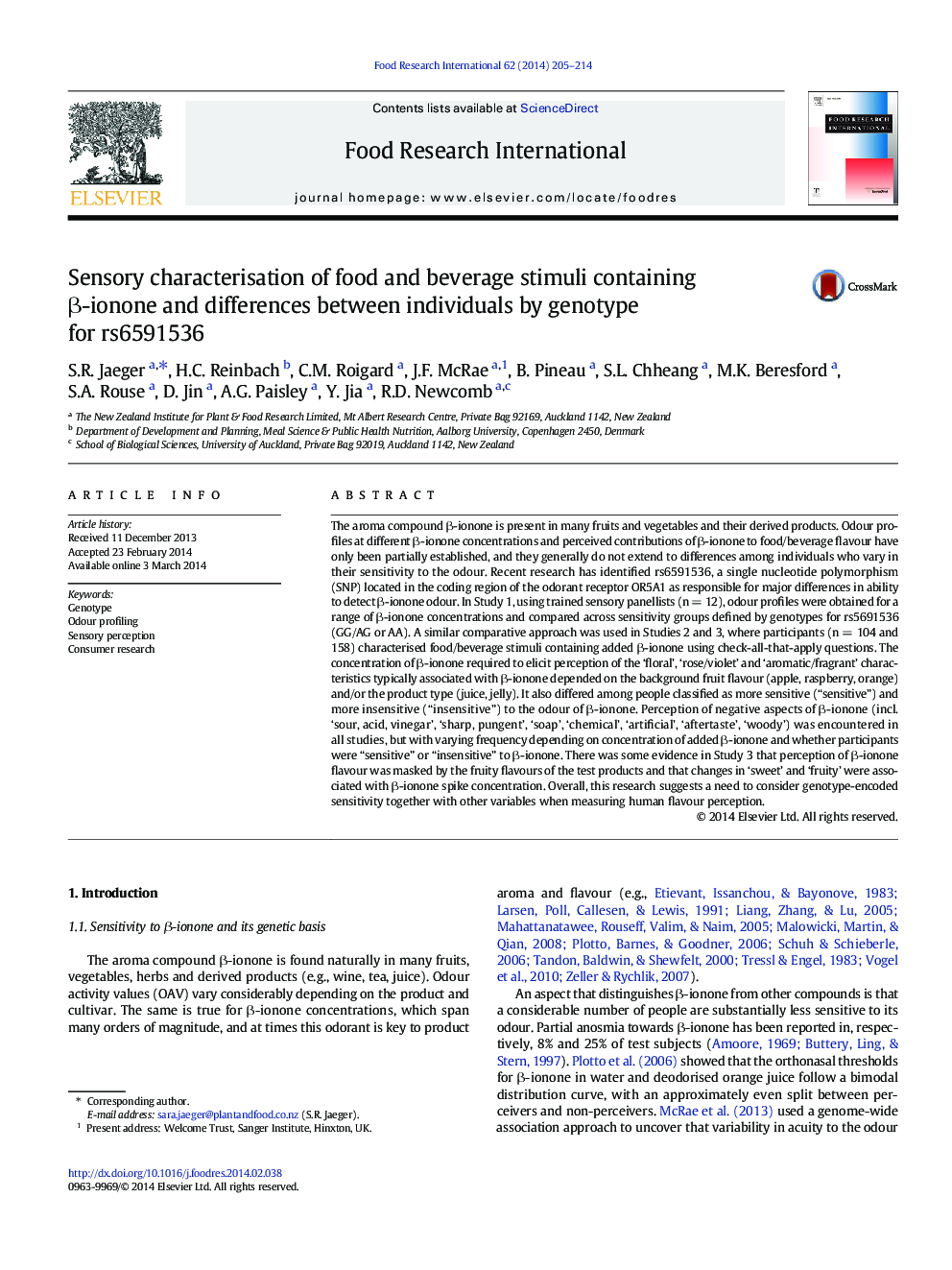| کد مقاله | کد نشریه | سال انتشار | مقاله انگلیسی | نسخه تمام متن |
|---|---|---|---|---|
| 6395782 | 1628482 | 2014 | 10 صفحه PDF | دانلود رایگان |

- Human sensitivity to β-ionone is determined by genotypes for rs6591536 “Insensitive” individuals rarely perceive β-ionone as 'floral' and 'fragrant'.
- Perceptual differences transcend food/beverage formats and fruity flavours.
The aroma compound β-ionone is present in many fruits and vegetables and their derived products. Odour profiles at different β-ionone concentrations and perceived contributions of β-ionone to food/beverage flavour have only been partially established, and they generally do not extend to differences among individuals who vary in their sensitivity to the odour. Recent research has identified rs6591536, a single nucleotide polymorphism (SNP) located in the coding region of the odorant receptor OR5A1 as responsible for major differences in ability to detect β-ionone odour. In Study 1, using trained sensory panellists (n = 12), odour profiles were obtained for a range of β-ionone concentrations and compared across sensitivity groups defined by genotypes for rs5691536 (GG/AG or AA). A similar comparative approach was used in Studies 2 and 3, where participants (n = 104 and 158) characterised food/beverage stimuli containing added β-ionone using check-all-that-apply questions. The concentration of β-ionone required to elicit perception of the 'floral', 'rose/violet' and 'aromatic/fragrant' characteristics typically associated with β-ionone depended on the background fruit flavour (apple, raspberry, orange) and/or the product type (juice, jelly). It also differed among people classified as more sensitive (“sensitive”) and more insensitive (“insensitive”) to the odour of β-ionone. Perception of negative aspects of β-ionone (incl. 'sour, acid, vinegar', 'sharp, pungent', 'soap', 'chemical', 'artificial', 'aftertaste', 'woody') was encountered in all studies, but with varying frequency depending on concentration of added β-ionone and whether participants were “sensitive” or “insensitive” to β-ionone. There was some evidence in Study 3 that perception of β-ionone flavour was masked by the fruity flavours of the test products and that changes in 'sweet' and 'fruity' were associated with β-ionone spike concentration. Overall, this research suggests a need to consider genotype-encoded sensitivity together with other variables when measuring human flavour perception.
Journal: Food Research International - Volume 62, August 2014, Pages 205-214